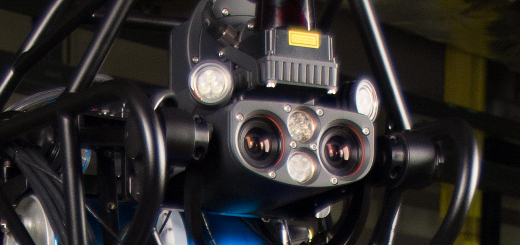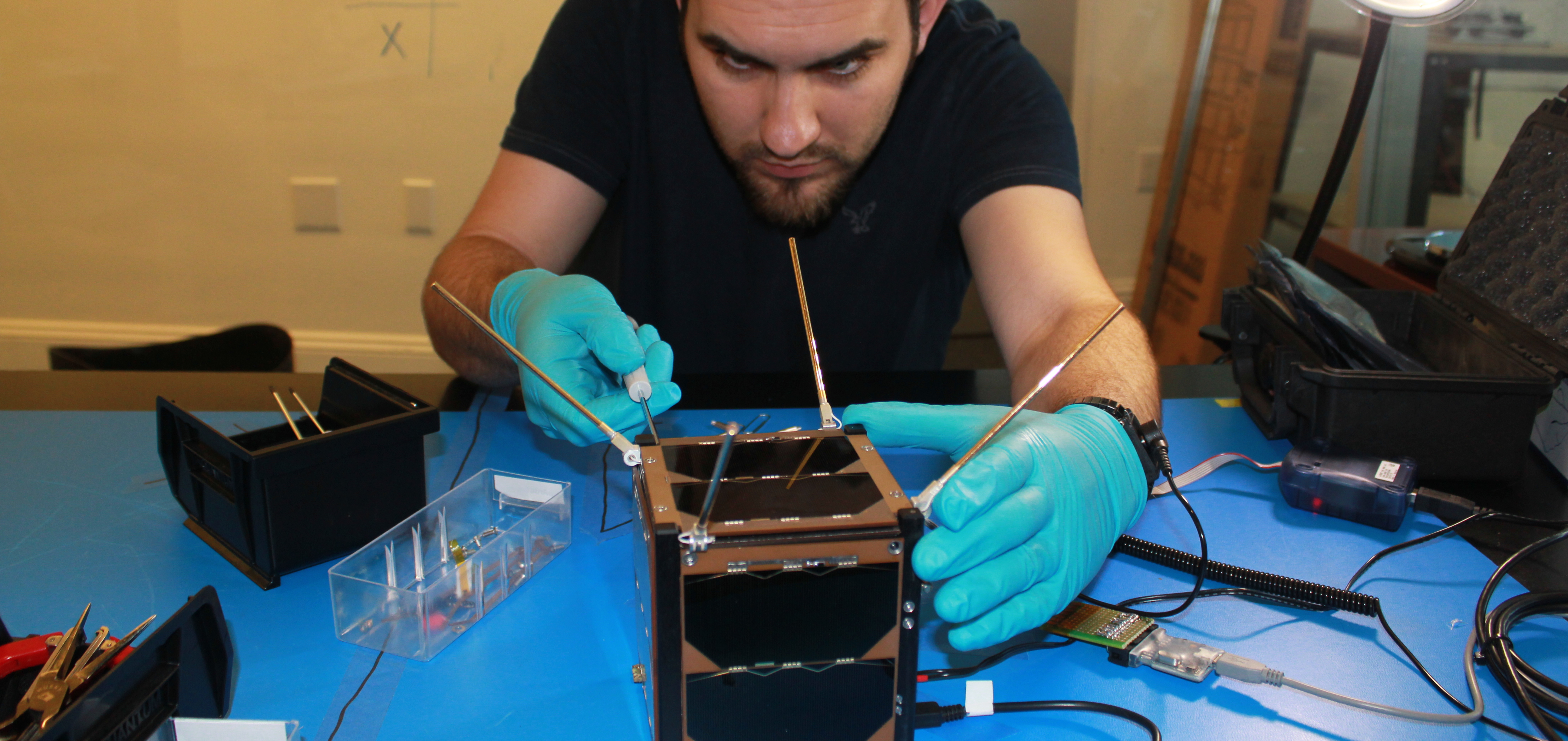Texas research institute launches new mission
The history of The University of Texas at Arlington Research Institute goes back 25 years, but its current name and mission only date back to last summer.
That’s when the organization, formerly known as the Automation and Robotics Research Institute, rebranded as “UTARI” and refocused its efforts on bridging the gap between academic research and product development.
The man behind that effort is retired Army Lt. Gen. Rick Lynch, who prior to coming on board at UTARI commanded all 163 U.S. Army installations around the world. Lynch retired on Jan. 1, 2012, and started work at UT Arlington that April. By July, he had released a 32-page strategic plan outlining the institute’s new mission. That report is now updated every six months as the institute works toward its goal to generate $100 million in research revenues by 2017.
New Focus
To achieve that goal, Lynch says UTARI will limit its focus to technology that can be commercialized in the near future.
“We could spend a lot of time in a research institute focused on technological projects that aren’t going to come to fruition in decades, and that’s not what we’re interested in,” Lynch says. “What I’m interested in is what is that technology that’s out there, that if we put some focused effort into it, it could become commercially viable within the next two years.”
The institute’s mission and vision statements use the phrase “enabling product development” to describe the new philosophy. Within two years, Lynch expects to have prototypes that he can pass off to a corporate sponsor or business for production.
UTARI’s current projects deal with advanced manufacturing, biomedical technologies, environmental issues and robotics. The common thread that unites those areas is a focus on creating advanced technology to help humanity.
“If you think about it, we as humanity need help in a variety of circumstances, and a lot of that help can be provided by robotic technology,” Lynch says.
When Lynch talks about the institute’s robotics research, he uses the phrase “assistive robotics.” At UTARI, that means an emphasis on robotic technology to help people with disabilities, which is a passion for both Lynch and his team. Researchers work with elderly populations as well as younger people who have physical or mental impairments or have been disabled in combat. In addition, UTARI’s definition of assistive robotics includes robots that aid in the performance of “dirty, dull and dangerous tasks.” That includes military, industrial and agricultural applications.
Health Care
Health care represents one of the largest markets for assistive robotics, and UTARI has a number of projects in that area. For example, the institute is using Zeno, a 2-foot robot whose facial features resemble a small child, to assist in the therapy of children with autism.
Autistic children are often uncomfortable interacting with human therapists but will happily interact with a robot like Zeno. This allows therapists to communicate through the robot, which they can control from another room.
“So a young child with autism, he thinks he’s playing with a robot, when in actuality he’s going through therapy,” Lynch says.
UTARI also has a proposal to develop smart-bed technology for the prevention of bedsores and pressure ulcers. Researchers at UTARI want to develop a flexible sensor sheet, robotic manipulators for distributed pressure nodes and design tools to control the bed.
Elder Care
Closely related to UTARI’s health care work is its elder care research. Lynch points out that the U.S. has an aging population and by 2020, 6.5 million Americans will be over the age of 85.
“That group of people, what they’re going to want to have is independence, and robotic technology can help them with that,” Lynch says.
To help provide that independence, UTARI is among a number of universities and research facilities that are developing technologies to equip “smart homes.”
A smart home might have devices in the mirrors so researchers can study skin tone, color and texture. There could be sensors on the floor to measure gait and balance. If it looks like a resident is becoming unstable, researchers would know about it in advance. A robot might be utilized to turn a bedridden patient.
“And at the appropriate time, we will spin off a company or hand off the technology to an established company, so we can commercialize the technology,” Lynch says.
Wounded Warriors
Another group that UTARI focuses on is disabled veterans. It’s a group Lynch cares passionately about — he serves on the boards of multiple foundations dedicated to helping service members, including Operation Finally Home.
Operation Finally Home builds mortgage-free homes for wounded service members, many of whom are quadriplegic as a result of their service in combat. To help this group, UTARI is developing an eye-tracker mechanism that connects to their wheelchairs and can control their movement.
Disabled veterans share many things in common with the other groups UTARI works with, but Lynch says they have unique needs as well. And not only do individual groups have varying needs, so does each individual.
As an example, Lynch says Operation Finally Home is currently building homes for two quadriplegic service members, one soldier and one marine. Rather than assuming the two veterans face the same challenges, the group found it must work closely with each family on the design of their home. UTARI’s approach is no different.
“Every individual based on their circumstances may have different needs,” Lynch says. “So what we have to do is develop some generic technology that applies to everyone with disabilities and then fine-tune it based on specific circumstances.”
Partnerships
Lynch says collaboration with outside groups will be critical to UTARI’s success going forward, especially in three key areas: government, industry and academia. Since refocusing its mission, the institute has made progress on all three fronts.
UTARI is working with the Department of Defense, the National Science Foundation and other federal agencies. A large NSF contract, for example, involves developing a robotic skin that not only looks natural but has sensors and actuators so it can interact with its environment.
On the university side, UTARI is working with organizations like the Southwest Research Institute, Northwestern University, the University of Pittsburgh and many of the large research institutions in North Texas.
Industry partnerships include QinetiQ North America and RE2, who have become corporate sponsors. QinetiQ donated a $100,000 research gift as well as a Dragon Runner 20 robot. RE2 donated an $850,000 robotic nursing assistant and UTARI is studying ways to use the platform to help real-world nurses. UTARI is also partnering with Willow Garage and using its PR2 robot to research ways to aid people with a variety of personal tasks.
The Future
In its 2½-decade history, the Automation of Robotics Research Institute never generated research revenue on the level the university believed it could. If Lynch and his team achieve the goals they have set out, that will change very quickly.
“We have shifted to commercialization, we’ve shifted to disciplines outside automation and robotics that include biomedical research and energy, water and the environment,” Lynch says. “We’ve hired a bunch of additional staff and scientists to allow us to focus. So, yeah, it’s much more than just changing brands.”
UTARI may be a new name in the robotics industry, but in the next five years, Lynch expects you to know it well. By 2017, UTARI’s goal is to be among the global leaders in robotics. During that timeframe, its aggressive strategic plan calls for staff to grow from 24 to 400 and annual research expenditures in robotics to explode from about $52,000 to $25 million. The most recent version of that plan also sums up the motivation behind those lofty goals:
“While a big part of our mission is to generate research revenue for UTA, we believe in the statement that you can do well while doing good,” it reads. “There is a lot of advanced technology already available that can greatly improve people’s lives, but most of it is too expensive for the people who really need it. We believe that we can make a difference by making this type of technology more affordable while maintaining or even improving its functionality.”
[ photo courtesy of UTARI ]



